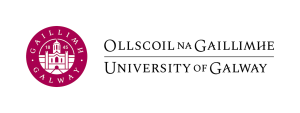Exploring the Dynamics of Meteotsunamis Through Advanced Simulations


Dr. Nicole Beisiegel shared insights into her research on the numerical simulation of meteotsunamis, focusing on the mechanisms that drive these potentially destructive waves and their accurate representation in computational models.
Dr. Beisiegel is a Lecturer in Applied Mathematics at the School of Mathematics & Statistics at TU Dublin, where she specialises in computational mathematics and its applications to Earth Sciences, including the simulation of natural hazards such as tsunamis and coastal flooding.
Title
The Research
This study focuses on the numerical simulation of meteotsunamis, which are atmospherically induced, potentially destructive, and extreme waves in the tsunami frequency band. Meteotsunamis are a multi-resonant phenomenon, with the dominant mechanism behind them being Proudman resonance.
In order to develop comprehensive modelling capabilities to protect coastal communities, understanding all of these mechanisms and their accurate simulation is essential. This is why the study employs a state-of-the-art computational model to examine how well the underlying resonances and resulting waves are represented within the model.
Using the 2017 meteotsunami along the Dutch coast as a benchmark, the overall goal is to demonstrate that this type of model can simulate meteotsunamis. Based on this benchmark, the computational model will also be used to explore uncertainties in modelling this coastal hazard
Title
The Technology
The computational model used in this study is a Discontinuous Galerkin model with adaptive mesh capabilities. The adaptive mesh enhances computational efficiency by locally distributing high resolution only in areas of interest, e.g., the location of atmospheric pressure disturbances.
High-performance computing (HPC) is employed to make an uncertainty study feasible with a not fully parallelised model, by running a large number of perturbed simulations on the same node simultaneously.

Title
The Impact
The key milestone of this research project is a detailed hindcasting study using available measurement data from the 2017 meteotsunami event along the Dutch coast as a benchmark. This will incorporate realistic data into a novel computational model that has been shown in a previous study (see publication below) to be capable of simulating extreme waves triggered by the dominant resonance mechanism in idealised scenarios.
An uncertainty study will further explore the dependence of model results on data quality and resolution. The overall aim is to improve current modelling capabilities and inform the development of future flood models.
Title
Introduction to the Research Team

Dr Nicole Beisiegel is a lecturer in Applied Mathematics in the School of Mathematics & Statistics at TU Dublin. Her research focusses on computational mathematics with applications in Earth Sciences. In particular, she is interested in mathematical algorithms and the simulation of natural hazards such as tsunamis, hurricanes and coastal flooding.
Beisiegel, N and Behrens, J.: Numerical Testcases to Study Proudman Resonance Using Shallow Water Models in: Proceedings of the 8th European Congress for Computational Methods in Applied Sciences and Engineering, eccomas2022. (2022)



